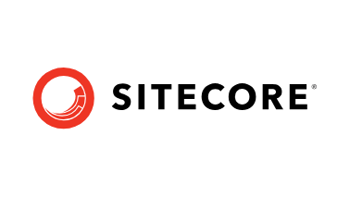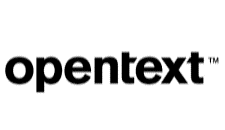Delivering end-to-end Digital Transformation
.png?width=1813&height=490&upsize=true&upscale=true&name=HB%20Item%201%20(4).png)
BLOG
Designing experiences that Engage, Convert, and deliver Results
User Experience and Design
Our User Experience & Interaction Design Capability focuses on best practice architecture, implementations, and managed services for: ServiceNow Service Portal, ServiceNow Customer and Consumer Portal, ServiceNow Employee Center, ServiceNow Agent Workspace, ServiceNow Mobile
Coforge helps businesses deliver seamless digital experiences to customers, partners, and employees. They personalize interactions across all channels and integrate digital aspects into core business functions. By understanding user journeys and leveraging industry best practices, Coforge helps businesses achieve better brand loyalty and revenue growth.
Our differentiated approach
- We take a user journey-centric approach to designing and delivering a personalized and consistent experience. The Coforge DX approach recognizes that experiences are enabled by an integrated digital ecosystem cutting across capabilities in marketing, front-end, business processes, organizations core systems, and partner systems.
- We design for outcomes. We have maturity frameworks and assessment toolkits tailored to outcomes specific to industries and help anchor DX initiatives in concrete KPIs providing a clear sense of business value that helps define success. In some instances, we have taken on outcome-based models as part of our engagements.
- We help our clients stand out in the industry they operate in. Our industry knowledge in our chosen verticals provides us differentiated expertise in core systems that power the content for the experience in digital channels as well as opportunities and challenges in those industries.
- We enable Digitization around the Core to help fulfil the promises of a journey-centric experience by integrating into the business process and connecting to core systems.
Stategic Highlights

Now Mobile
Provide your employees with the power of self-service on their fingertips.

Service Portal and Employee Center
Coforge delivers human-centric, self-service experiences to your customers and employees by creating innovative engagement solutions.

Agent Workspace
Improve agent experiences and efficiency. Solve issues faster with a workspace built to facilitate resolutions. From a single view, get full context, analytics, and AI-assisted recommendations to resolve issues quickly.

Enterprise Service Management
We bring an organisation’s departments together to deliver end-to-end service-based solutions to employees and customers. Let’s create a feature rich marketplace of all your services using a single, seamless interface.

Virtual Agent
Provide personalised customer experiences and automate assistance to your customers and employees. Integrate with familiar social and messaging channels to increase engagement and retention.

UI/UX Design
Coforge can help craft strategic digital experiences with pixel perfect user interfaces. We apply design thinking and our human centric design experience to provide interactive and innovative self-service experiences.

Now Mobile
Provide your employees with the power of self-service on their fingertips.

Service Portal and Employee Center
Coforge delivers human-centric, self-service experiences to your customers and employees by creating innovative engagement solutions.

Agent Workspace
Improve agent experiences and efficiency. Solve issues faster with a workspace built to facilitate resolutions. From a single view, get full context, analytics, and AI-assisted recommendations to resolve issues quickly.

Enterprise Service Management
We bring an organisation’s departments together to deliver end-to-end service-based solutions to employees and customers. Let’s create a feature rich marketplace of all your services using a single, seamless interface.

Virtual Agent
Provide personalised customer experiences and automate assistance to your customers and employees. Integrate with familiar social and messaging channels to increase engagement and retention.

UI/UX Design
Coforge can help craft strategic digital experiences with pixel perfect user interfaces. We apply design thinking and our human centric design experience to provide interactive and innovative self-service experiences.
Success stories.
Case Study | Experience | Digital Experience
Transforming Digital Commerce by growing mobile sales by 100% in 6 months for a leading Global Airline in EuropeCase Study | Experience | Digital Experience
Revolutionizing User Experience for a Financial Investment Management CompanyCase Study | Experience | Digital Experience
Website Modernization for the British Library-2.jpeg?width=600&height=800&name=CS%20Item%201%20(2)-2.jpeg)
Case Study | Experience | Digital Experience
Transforming Digital Commerce by growing mobile sales by 100% in 6 months for a leading Global Airline in Europe
-2.jpeg?width=600&height=800&name=CS%20Item%202%20(3)-2.jpeg)
Case Study | Experience | Digital Experience
Revolutionizing User Experience for a Financial Investment Management Company
-2.jpeg?width=600&height=800&name=CS%20Item%201%20(3)-2.jpeg)
Case Study | Experience | Digital Experience
Website Modernization for the British Library
What we know.
Blog | Experience | Digital Experience
Enabling frictionless customer experiences using Open Banking.Blog | Experience | Digital Experience
Intelligent Connected ExperienceBlog | Experience | Digital Experience
The case for User Experience Research-3.jpeg?width=600&height=800&name=Artefact%201%20(1)-3.jpeg)
Blog | Experience | Digital Experience
Enabling frictionless customer experiences using Open Banking.
-3.jpeg?width=600&height=800&name=Artefact%202%20(1)-3.jpeg)
Blog | Experience | Digital Experience
Intelligent Connected Experience
-Jul-16-2024-04-27-35-1248-PM.jpeg?width=600&height=800&name=Artefact%203%20(1)-Jul-16-2024-04-27-35-1248-PM.jpeg)
Blog | Experience | Digital Experience
The case for User Experience Research
Our credentials.
800+
Full stack Engineers
150+
Certified CMS consultants
100
Mobile Developers
Our technology partners.



Empower Your Business to Lead the Future
Know moreWHAT WE DO
Explore our wide gamut of digital transformation capabilities and our work across industries.
Explore






-2.jpeg?width=600&height=800&upsize=true&upscale=true&name=CS%20Item%201%20(2)-2.jpeg)
-2.jpeg?width=600&height=800&upsize=true&upscale=true&name=CS%20Item%202%20(3)-2.jpeg)
-2.jpeg?width=600&height=800&upsize=true&upscale=true&name=CS%20Item%201%20(3)-2.jpeg)
-3.jpeg?width=600&height=800&upsize=true&upscale=true&name=Artefact%201%20(1)-3.jpeg)
-3.jpeg?width=600&height=800&upsize=true&upscale=true&name=Artefact%202%20(1)-3.jpeg)
-Jul-16-2024-04-27-35-1248-PM.jpeg?width=600&height=800&upsize=true&upscale=true&name=Artefact%203%20(1)-Jul-16-2024-04-27-35-1248-PM.jpeg)